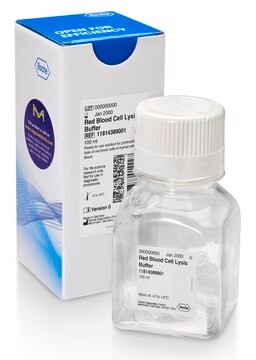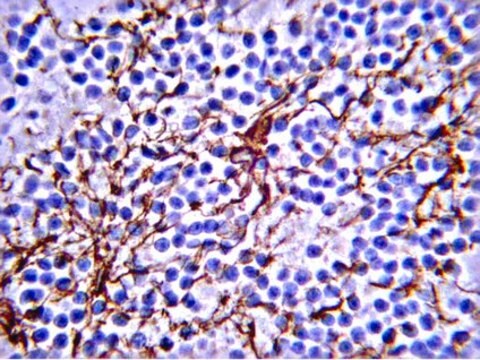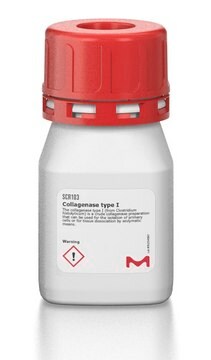AB8345
Anti-MMP-14 Antibody
serum, Chemicon®
Synonym(s):
MT1-MMP
About This Item
Recommended Products
biological source
rabbit
Quality Level
antibody form
serum
antibody product type
primary antibodies
clone
polyclonal
species reactivity
human
manufacturer/tradename
Chemicon®
technique(s)
ELISA: suitable
flow cytometry: suitable
immunocytochemistry: suitable
immunoprecipitation (IP): suitable
western blot: suitable
NCBI accession no.
UniProt accession no.
shipped in
dry ice
target post-translational modification
unmodified
Gene Information
human ... MMP14(4323)
Specificity
Immunogen
Application
Western blot: 5 μg / ml Expected band sizes: 60-63 kDA and 42 kDa pro-enzyme and degradation form respectively.
Immunopreciptation: 1-2 μg / mg total protein in 500 μl reaction volume.
FACS Analysis: 5 μg/ mL (1 million cells per mL)
EIA: 1:10,000
Optimal working dilutions must be determined by the end user.
Cell Structure
MMPs & TIMPs
Physical form
Storage and Stability
Analysis Note
Immunocytochemistry positive control: U251 glioma cells; negative control MCF7 breast carcinoma.
Western Blot positive control: HT1080 fibrosarcoma, negative control: MCF7 breast carcinoma
Other Notes
Legal Information
Disclaimer
Not finding the right product?
Try our Product Selector Tool.
recommended
Storage Class Code
10 - Combustible liquids
WGK
WGK 2
Flash Point(F)
Not applicable
Flash Point(C)
Not applicable
Certificates of Analysis (COA)
Search for Certificates of Analysis (COA) by entering the products Lot/Batch Number. Lot and Batch Numbers can be found on a product’s label following the words ‘Lot’ or ‘Batch’.
Already Own This Product?
Find documentation for the products that you have recently purchased in the Document Library.
Our team of scientists has experience in all areas of research including Life Science, Material Science, Chemical Synthesis, Chromatography, Analytical and many others.
Contact Technical Service







